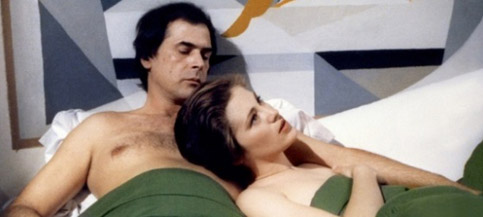|
|
Sole Criterion: Identification of a WomanBy Brett Ballard-BeachMarch 29, 2012
Near the end of the film, Nicollo and Ida are in an area he refers to as the “open lagoon” off the coast of Venice, literally out to sea in a rowboat on calm waters. Again, this must be location shooting, but Carlo Di Palma’s cinematography (significantly less “showy” throughout than in past Antonioni works, even ones he had also shot) gives the tranquil body of water an air of such artificiality as it extends to a bright plastic horizon that I almost expect to see Truman Burbank wading knee-deep through the sound stage on a search for the exit door. Here, the lovers’ conversation is more profound and probing, leaving the door open for a “happy” ending, with which the penultimate sequence wrenchingly disposes. Antonioni probes depth of eroticism and sexual explicitness with the insight which one would imagine a septuagenarian might have obtained but avoids wandering over into the provenance of the “dirty old man.” As the film is split in two between the two relationships, so is Nicollo’s physicality and intimacy with the two women. All three of the sex scenes occur in the first half, involving Nicollo and Mavi and fairly convincingly simulated oral sex, fisting and uninhibited bare-assed intercourse. The cut from the last of these sessions to the point in the future where Nicollo abruptly discovers Mavi has vanished from his life is the most emotionally jarring in the film.
|

|
|
|

|
Sunday, May 5, 2024
© 2024 Box Office Prophets, a division of One Of Us, Inc.


